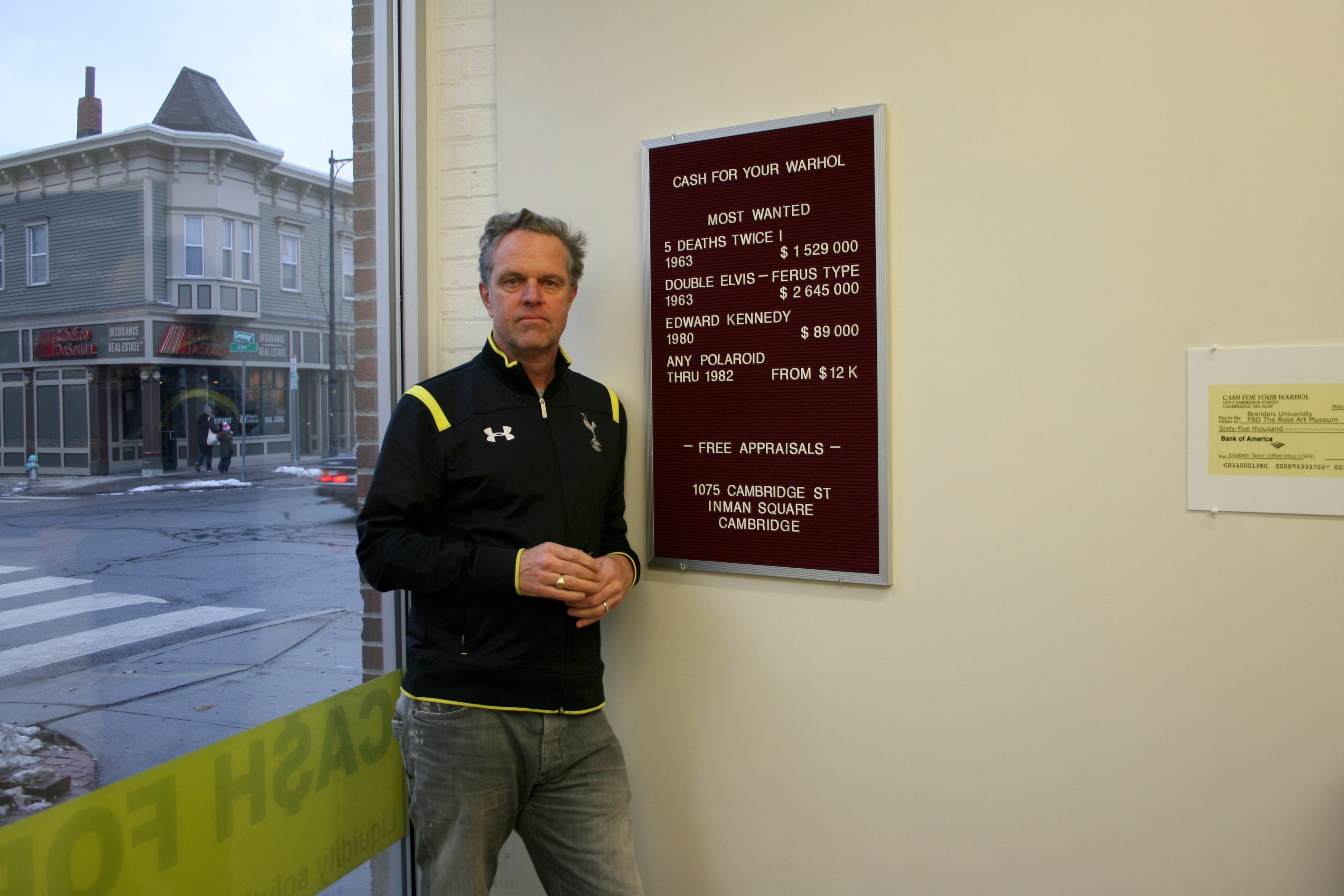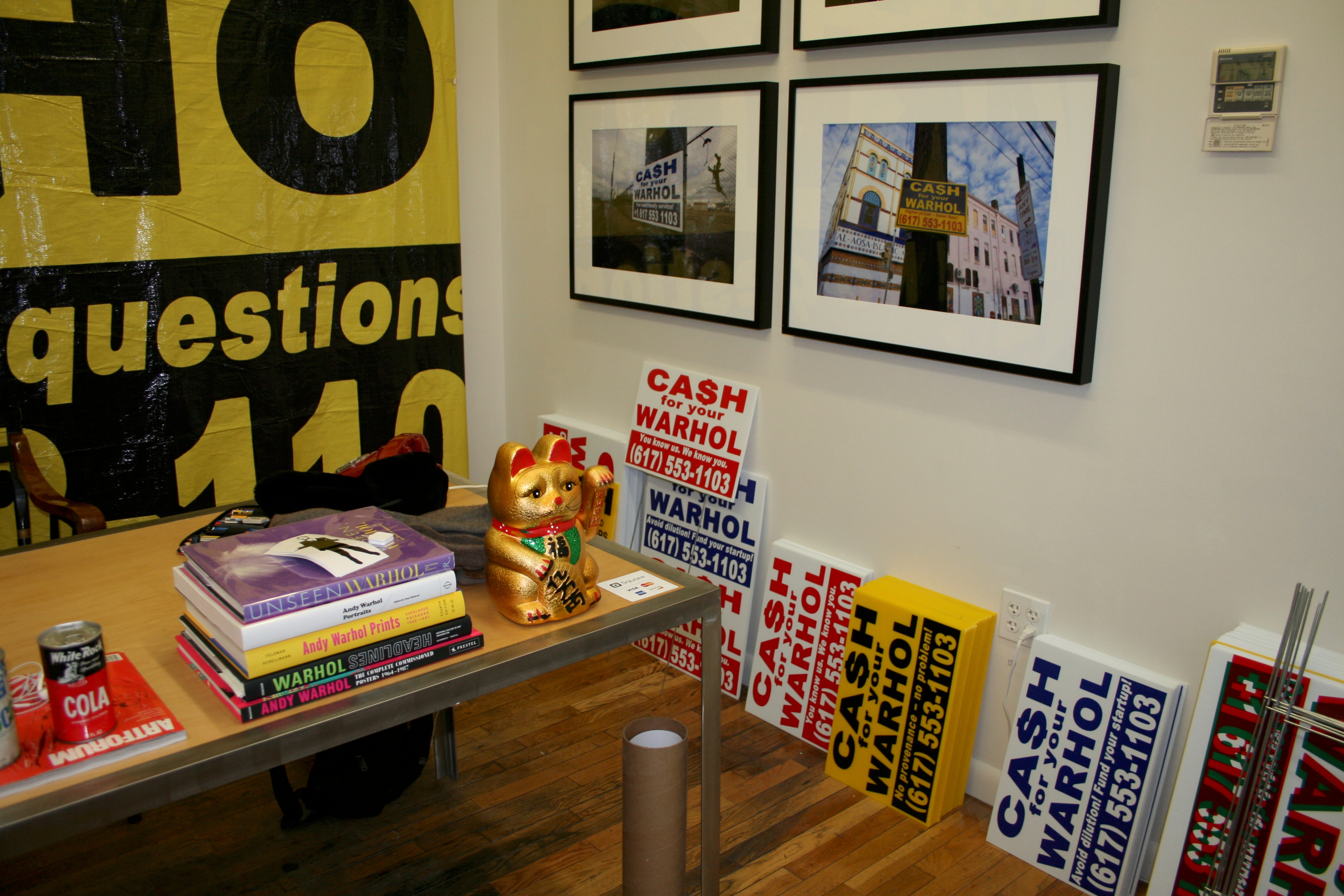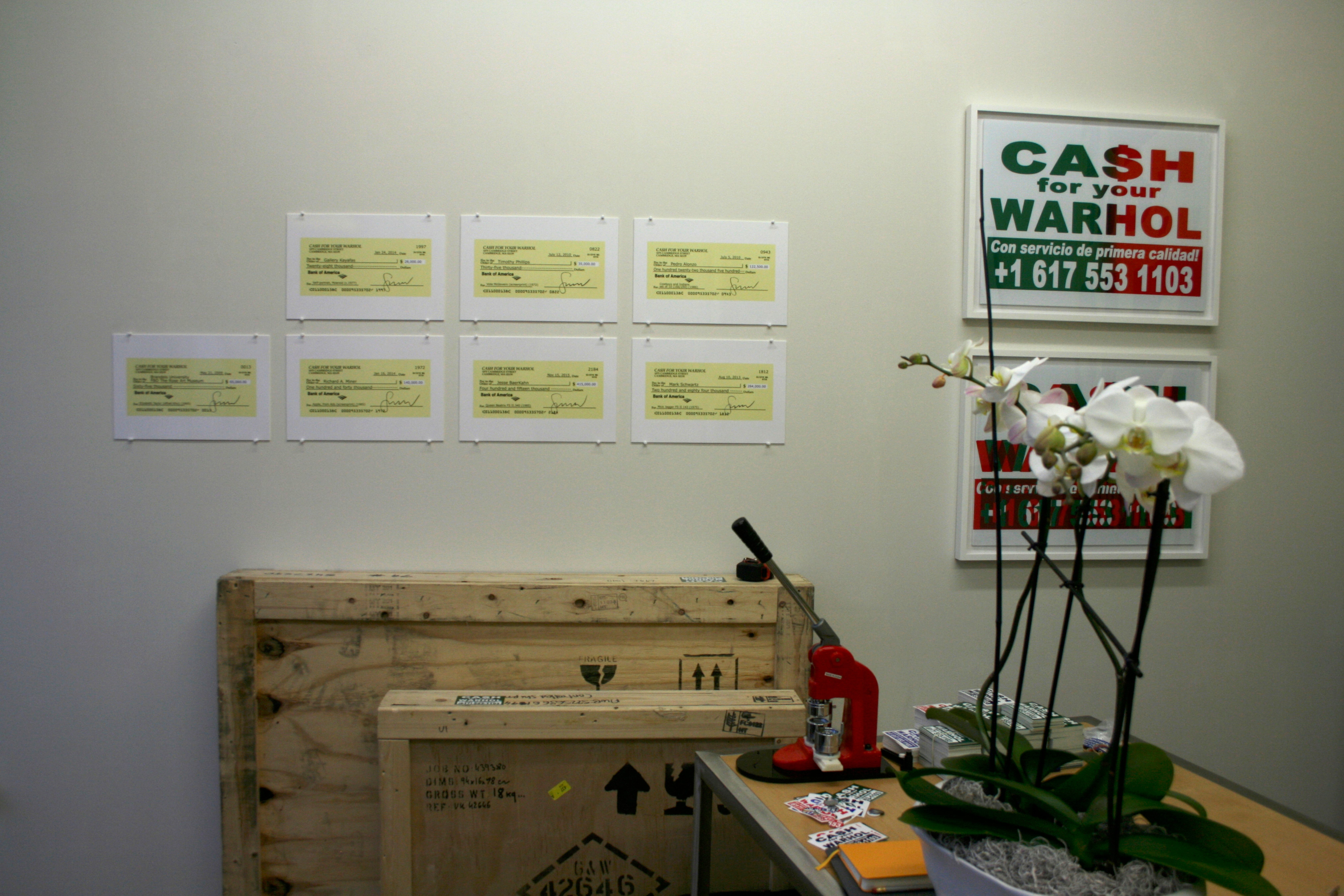An Afternoon At Boston’s Newest Parody Storefront, ‘Cash For Your Warhol’

Cash For Your Warhol, Inman Square’s newest fake business. (All Photos: Atlas Obscura)
Inman Square in Cambridge, Massachusetts, is a quiet neighborhood that feels distant from the city’s universities, a good place to linger in a café or browse through bookstores and antique shops. Last week, though, the square got a loud newcomer: an art project masquerading as a small business, decked out in safety yellow and advertising “Cash For Your Warhol.”
The store, nestled between a tony wine bar and a vegetarian fast-food stop, is insistently garish, festooned with signs that repeatedly shout its name and purpose. A thin banner across the top elaborates some common wares: “MAO / MARILYN / SOUP CANS / ELECTRIC CHAIR / ELVIS.” Inside, the joke continues, in the form of smaller jokes: oversized checks on the walls from successful purchases, and a board detailing the most sought-after works.
The back wall is covered by a vinyl sign so enormous that its edges have to be folded over, the slogan truncated into “AS FOR YOUR ARHO.” Overseeing it all is Geoff Hargadon–the energetic Somerville resident who, depending on your preferred narrative, serves either as company founder or artistic mastermind.

Hargadon in front of his most-wanted board.
Hargadon, a financial planner by day, has been pretending to buy Warhols since 2009, when the recession spawned an influx of bandit signs promising ”Cash For Your Home” and “Cash For Your Gold.” Fascinated by the sheer bluntness of the signs, Hargadon started collecting them. At some point, while thinking about markets left untapped, “the phrase [Cash For Your Warhol] just popped into my head,” he says. He set up a hotline (617-553-1103), designed his own line of signs, stickers and billboards, and stuck them all over major cities from Kentucky to Pennsylvania.
The storefront, which opened in January 2016, is the latest incarnation of the project, which has also taken the form of several gallery shows and an installation outside Brandeis University’s Rose Art Museum, which at one point considered selling a portion of its collection. Now that it’s a brick-and-mortar operation, Cash For Your Warhol is even more public-facing. Hargadon threw a “totally packed” opening bash, and hosts visitors during irregular hours, which he announces on Twitter.

The signs that started it all, in their new digs.
Do people ever bring in art? “Not Warhols,” Hargadon says. Someone recently asked if he could authenticate watercolors, and a neighborhood wanderer managed to sell him a couple of very old soda cans, which Hargadon has placed on the desk. They’re not quite Campbell’s soup cans, but they lend the place a certain seriousness. There’s a rather splendid orchid unfurling next to them, with a card “signed” by a well-known gallery owner, congratulating Hargadon on his “expansion.”
Not everything in the store is tongue-in-cheek. On the bulletin board, Hargadon has pinned up some legal correspondence so strange that even he couldn’t make it up. Last year, an art buyer began using the project’s design and ethos to actually purchase Warhols, via the very similar website cashforyourwarhols.com. Hargadon sent him a cease and desist order, and although the process has been fairly smooth, he can’t stop thinking about it–it makes him, he summarizes, “a fake business going after a real business because they’re interrupting my ability to be a fake business.” It tickles him enough that he’s considering working on a spinoff project about it.

Crates, checks, and an orchid, all of questionable provenance.
For now, though, he’s putting his efforts into the storefront. “Before I moved in I thought I’d be really self-conscious,” Hargadon says, “but it’s actually really relaxing in here.” He pauses. “See that guy out there?” Through the plate glass, a rushing pedestrian has slowed down and is squinting at the signs. “That’s a classic reaction,” Hargadon says. “He might come in, he might not. I usually just let them look.” The man continues on, stopping once more to look over his shoulder.
If he comes back to visit, however, he can look forward to a tour as bright and vertiginous as a screenprinted car crash. “Some of the stuff in the store is real, and some of it isn’t. And if people really want me to tell ‘em, I’ll tell ‘em,” says Hargadon. But it’s “better to leave it in the gray.”



























Follow us on Twitter to get the latest on the world's hidden wonders.
Like us on Facebook to get the latest on the world's hidden wonders.
Follow us on Twitter Like us on Facebook